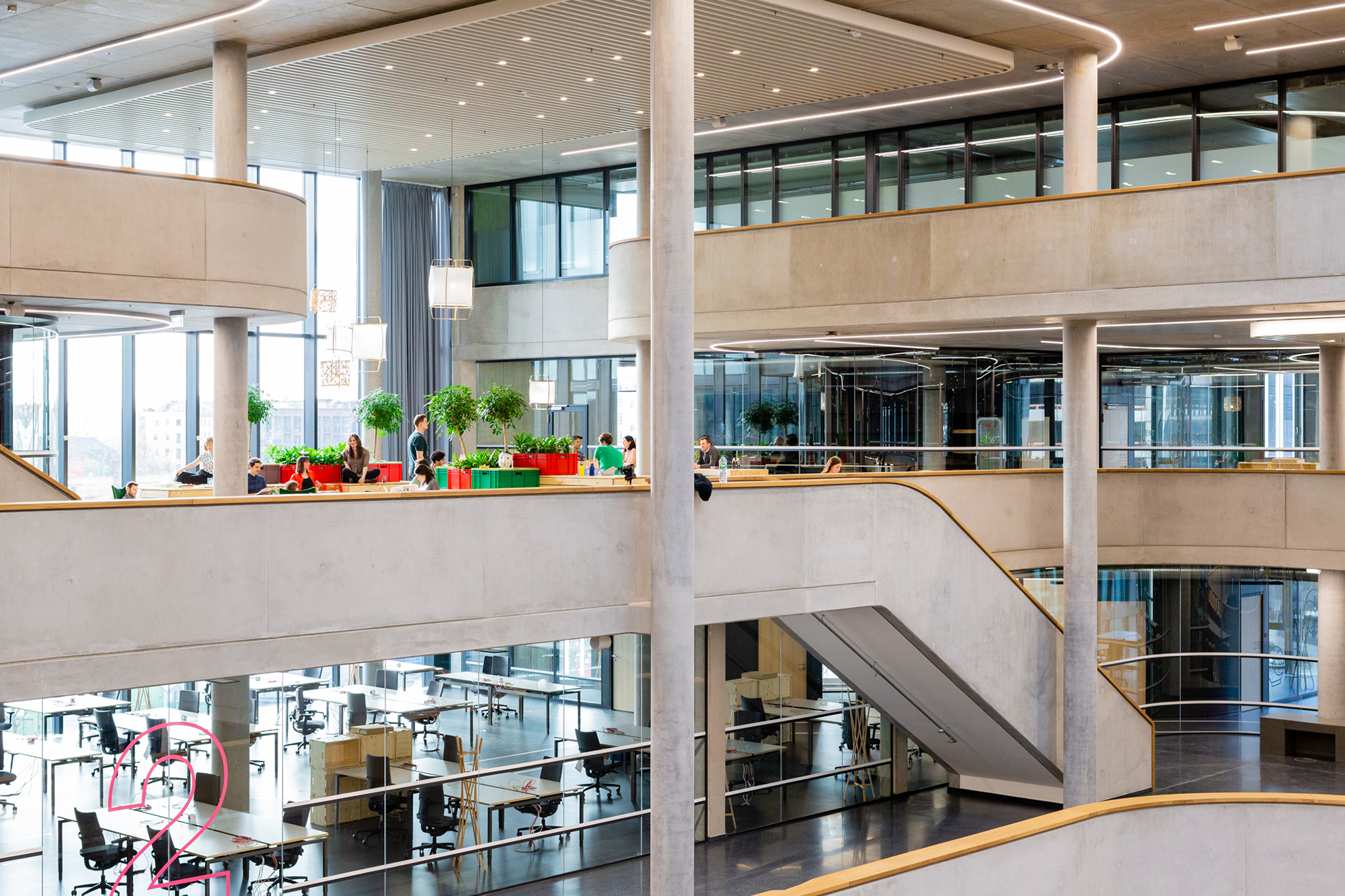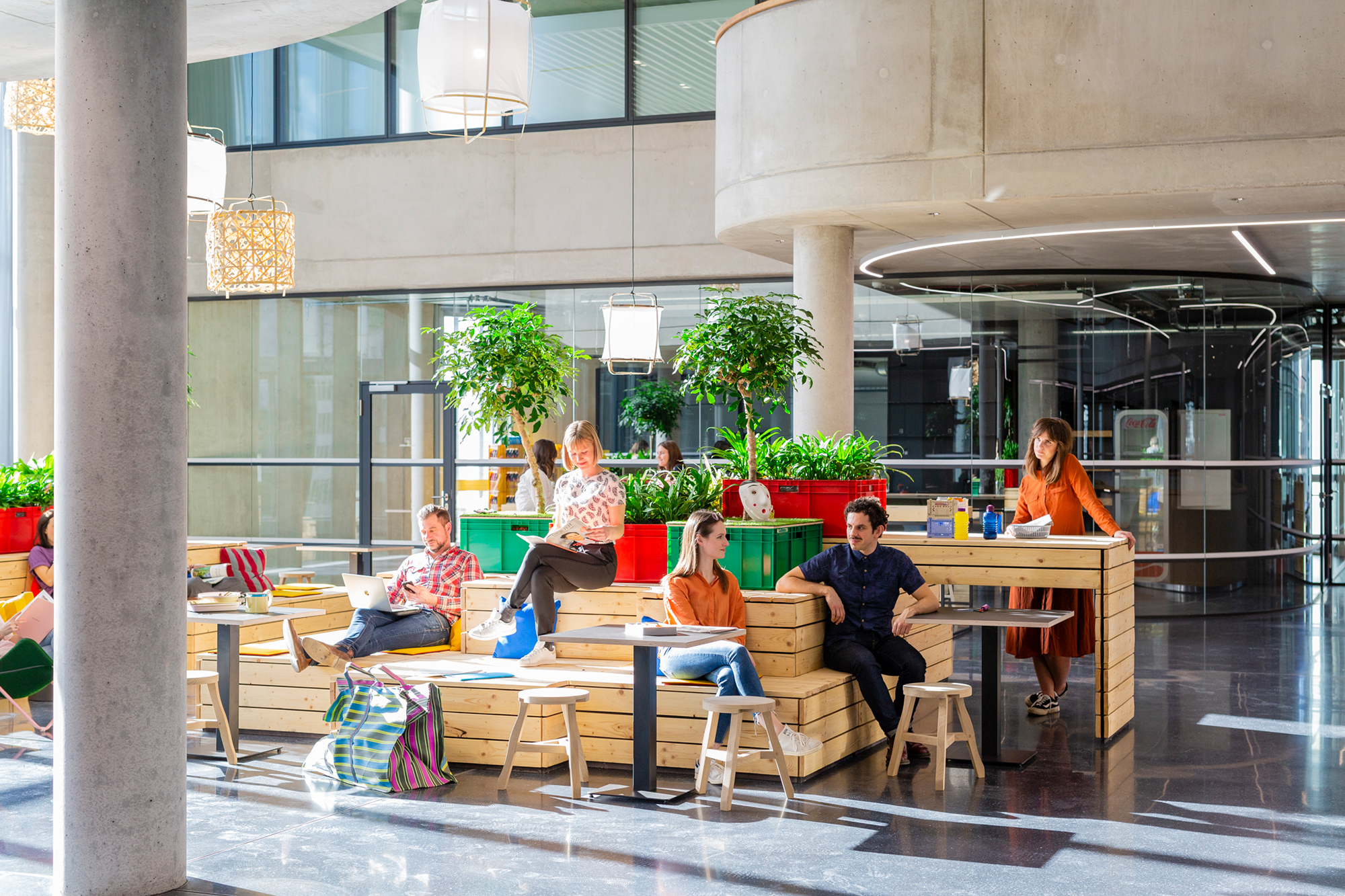Urban catwalks
An Interview with Kinzo

Foto: Sebastian Dörken
You developed the design and identity of the Zalando building from the viewpoint of its users.
What exactly does that mean?
Chris Middleton: In the competition phase, we conducted a lot of interviews. We wanted to understand the multifaceted nature of the young Berlin company and its employees. Zalando is international: the employees come from all over the world and may be in the city for just a short time. This is why the building should create a link to the city of Berlin. We had the idea of capturing and bundling the energy of the city with the interior design of the building. Zalando is just as colourful and creative, heterogeneous and international as the various districts of the capital.
Karim El-Ishmawi: Correspondingly, motifs from the Mitte, Prenzlauer Berg, Kreuzberg, Friedrichshain, Neukölln and Wedding neighbourhoods appear in the design. Formative places from Zalando’s history have been taken up and reinterpreted.
How can we imagine that in terms of space?
KEI: The areas known as Living Rooms also serve as orientation points in a relatively complex traffic or guidance system. We are talking about communal spaces with high quality of stay and an unmistakable character that is unique to each area. Spontaneous encounters happen here, as do planned collaborations and discussions. This is how we support the possibilities for informal networking.
CM: Urbanity has been translated to the vertical plane, so to speak, and celebrated. A sort of urban catwalk starts in the lobby and winds its way like a spiral through all seven storeys, thus connecting the stacked communal areas. The open atrium forms a clearly defined centre that enables many different lines of sight.
Why does the topic of communication play such a crucial role in Kinzo’s projects?
KEI: Naturally, this has to do with the fact that individual living spaces are no longer so starkly delimited. Nowadays, people can work anywhere. Therefore, single-function spaces are becoming difficult to justify. For example, a hotel lobby now often acts as a coworking space and event venue. Offices frequently house gastronomic establishments. This makes it all the more demanding to develop a well-functioning office. Many factors come together there that influence our everyday lives. Working, communicating, taking occasional breaks and doing sport: all these activities overlap. Add to this the idea that the office must forge a strong identity because so many different people come together there. This is why we want to create places that make it possible to generate a sense of community.
CM: In some way, every larger company with more than 50 employees is a reflection of society. Our challenge is to connect private and public zones in order to create a living space that works well.



















